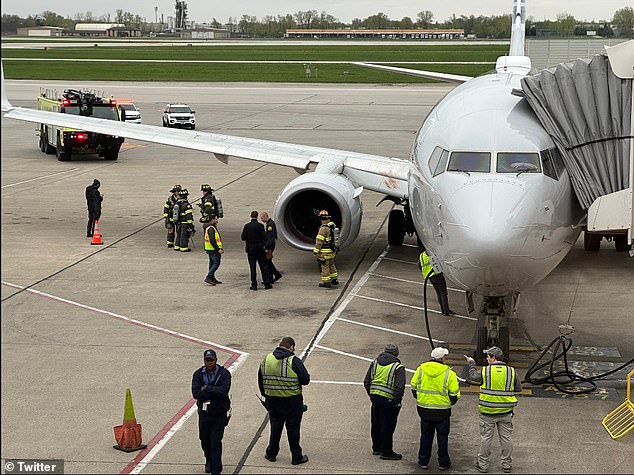
FORT WORTH- A maintenance lapse led to an engine fire on American Airlines (AA) Flight AA1006 at Denver International Airport (DEN), forcing a dramatic emergency evacuation in March 2025.
The Boeing 737-800 (registration: N885NN), flying from Colorado Springs (COS) to Dallas/Fort Worth (DFW), suffered an in-flight issue and diverted to Denver, where the right engine ignited upon arrival at the gate.
 Photo: NTSB
Photo: NTSBAmerican Airlines 737 Engine Fire
The National Transportation Safety Board (NTSB) released its preliminary findings on the March 13 incident involving American Airlines (AA).
The report cited multiple maintenance oversights as contributing factors. A critical safety wire, designed to secure a fuel connection in the engine, was found loosely installed and incorrectly positioned.
Additionally, a variable stator vane (VSV) actuator was not attached properly, creating the risk of a fuel leak.
Compounding these issues, a drain pipe in the affected engine was blocked with an adhesive substance, which may have further restricted proper drainage.
These faults collectively triggered engine vibrations shortly after takeoff, prompting the pilots to halt their ascent at 16,000 feet and divert to Denver.
Upon landing and while taxiing to the gate, the aircraft’s right engine caught fire. Ground camera footage later showed the aircraft leaking fluid during its five-minute taxi, signaling a possible fuel or hydraulic leak.
 Photo: Twitter
Photo: TwitterEmergency Evacuation
As Flight AA1006 approached the gate, smoke began filling the cabin. Passengers shouted “fire,” alarming the flight attendants.
Unable to reach the cockpit for guidance, the crew initiated an independent emergency evacuation.
Passengers evacuated through multiple exits: some via the jet bridge at the forward left-hand door, others using the rear emergency slide, and dozens through the overwing exits.
Unfortunately, one of the emergency slides failed to deploy, a separate issue still under investigation by the NTSB.
Importantly, the Boeing 737 lacks wing slides found on Airbus A320 aircraft. Instead, a safe overwing evacuation requires the flaps to be lowered.
Since the crew did not communicate with the flight deck before evacuating, the flaps remained up, causing several passengers to be stranded on the wing while awaiting rescue.
Firefighters arrived quickly, and ground staff used extinguishers to suppress the flames before fire crews fully took over.
 Photo: Andrew E. Cohen | Flickr
Photo: Andrew E. Cohen | FlickrAircraft Status
The 13-year-old aircraft sustained considerable damage. According to data from FlightRadar24, it returned to service on June 1, 2025.
However, that flight did not proceed, and the aircraft remains grounded. American Airlines has not issued an official comment. The NTSB investigation is ongoing.
According to PYOK, the grounding of the aircraft and the timing of the failed return to service reflect the severity of the incident and the complexity of the required repairs.
 Photo: American Airlines
Photo: American AirlinesEvacuation Challenges
This event also highlighted a known design limitation of the Boeing 737. Unlike newer models or competitor aircraft, the 737’s overwing exits are “self-help” and lack inflatable slides.
Evacuees must descend by sliding down the wing surface after the flaps are lowered to reduce drop height.
In this case, the failure to lower flaps due to the absence of cockpit coordination left passengers at risk, temporarily stranded on the wings.
This incident underscores the critical need for precise maintenance, clear communication protocols, and better crew training in emergency coordination, especially when dealing with aircraft that have non-standard evacuation designs.
Stay tuned with us. Further, follow us on social media for the latest updates.
Join us on Telegram Group for the Latest Aviation Updates. Subsequently, follow us on Google News
American Airlines 737 Pilot and Washington ATC Involved in Heated Argument
The post American Airlines 737 Engine Caught Fire Due to Maintenance Error: NTSB appeared first on Aviation A2Z.

















